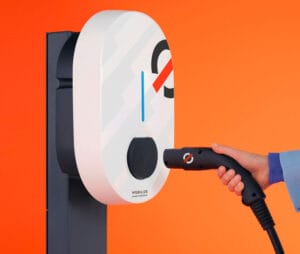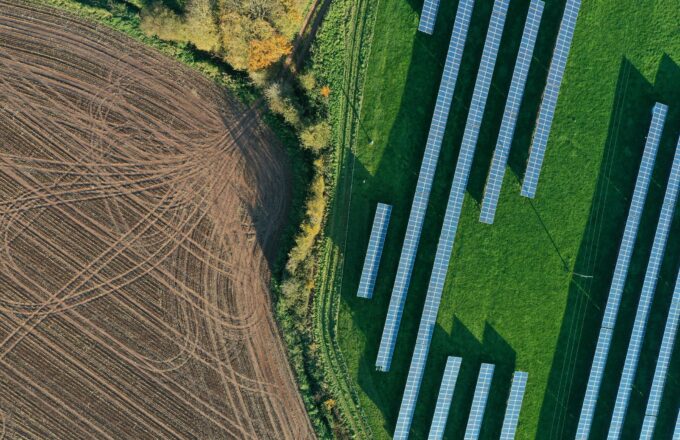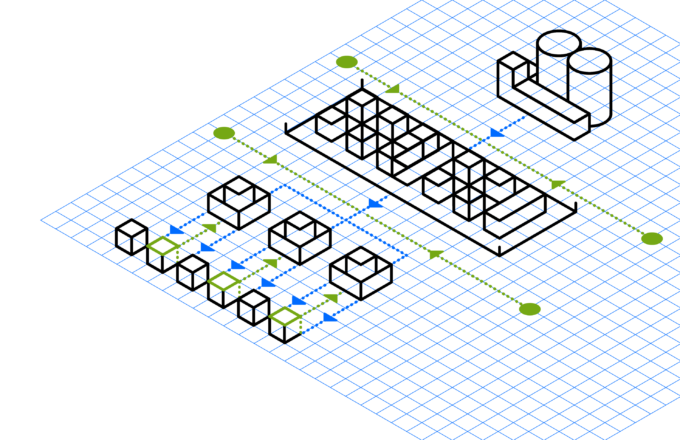Are vehicle-to-grid EVs the future of dynamic DER storage?

Renault’s new 5 E-Tech is set to be a big seller, with a host of glowing reviews and poll position in the European Car of the Year Awards 2025. And one of its key features is its bidirectional on-board charger, with vehicle-to-load and vehicle-to-grid (V2G) capabilities.
Alongside the car itself, the French manufacturer is pushing its Powerbox bidirectional charging station (pictured), alias a domestic EV wall-box with its own smart tariff supply contract, from subsidiary Mobilize.
‘Mobilize V2G sees electric vehicles becoming a source of energy for homes and the grid, providing additional flexibility, and making it easier to integrate renewable energies into the energy mix. V2G service users will actively contribute to the energy transition,’ says Renault. Electricity from Mobilize will also be carbon-free, it adds.
An increasing proportion of EV manufacturers are including V2G features in their vehicles, but Renault’s initiative could prove significant for marketing a complete vehicle-plus-wall-box package that promises to make it easy to capitalise on a range of smart, time-of-use tariffs. All future Renault EVs will include V2G on-board chargers.
Game-changing cost savings
The new Renault 5’s appeal partly lies in its price, with the 40kWh versions at under £23,000. Perhaps even more significantly, leasing costs are from under £250 pcm. Only a few years ago, a 40kWh domestic battery array alone would have cost more than this car. Even now, with most 10kWh home batteries costing £5,000+ (albeit falling), one could argue that Renault is offering customers a highly competitive energy storage system – and throwing in an award-winning motor for free.
We reckon savvy energy prosumers (solar + battery + heat pumps + smart tariff) will be doing their sums and arriving at the conclusion that by charging their V2G car on the lowest ToU (time of use) tariffs and with solar, they can store enough energy to do the school run, get to work and run the house, with maybe enough left over to sell back to the grid at a profit, during periods of peak demand.
It may be that EVs with bidirectional charging will persuade a lot more drivers to go electric. As it stands, 80% of the EV market is business buyers, with only 20% private purchasers. For many people, the economics of EV ownership (or leasing) have not so far added up. But Renault may have changed the calculations.
Leasing a Renault 5 E-Tech plus a Powerbox (other V2G models and brands will surely be available) could knock pounds off monthly petrol/diesel costs – and simultaneously pounds more from home electricity bills.
Load balancing potential
The possibility of millions of V2G in the future promises major potential benefits in terms of load balancing. Motorists will naturally be drawn to charging their cars when demand and prices are low, and use some of that energy for their homes, when demand and prices are high. They will also be incentivised to sell part of their stored energy back to the grid during peaks in demand.
Creating a network of grid-connected battery vehicles has the potential to reduce the need for utility-scale energy storage and transmission and distribution infrastructure. It should also help balance networks at local levels.
V2G vehicles could certainly be integrated with Fundamentals’ Total Voltage Control concept – an ecosystem of solutions to offer whole-system voltage control. This inlcudes the EVFS solution (extended voltage feedback system), which integrates data from customers’ smart meters with existing HV voltage control devices to optimise network voltages, and has proven successful during innovation project trials with Northern Powergrid.
Other aspects of Total Voltage Control will help with integration of community-level DERs, including V2Gs. The EcoVAR Static Compensator (STATCOM) corrects LV voltage fluctuations and phase imbalances, and can be augmented to include BESS (battery energy storage system) to offer further voltage control capability and community-scale energy storage..
The only downside is that V2G cars like the Renault 5 will only deliver their full potential for drivers who have somewhere to connect a bidirectional wall-box.
Learn more

- Automatic Voltage Control (AVC/AVR)
Extending life of old assets is key to grid sustainability

- Article
- Automatic Voltage Control (AVC/AVR)
- Control Scheme Services
- LV Network Control
- Tapchanger Services
Fundamentals partners with EcoJoule Energy to optimise power grids across Europe

- Automatic Voltage Control (AVC/AVR)
It’s time to give smart meter power to the people

- Article
- Automatic Voltage Control (AVC/AVR)